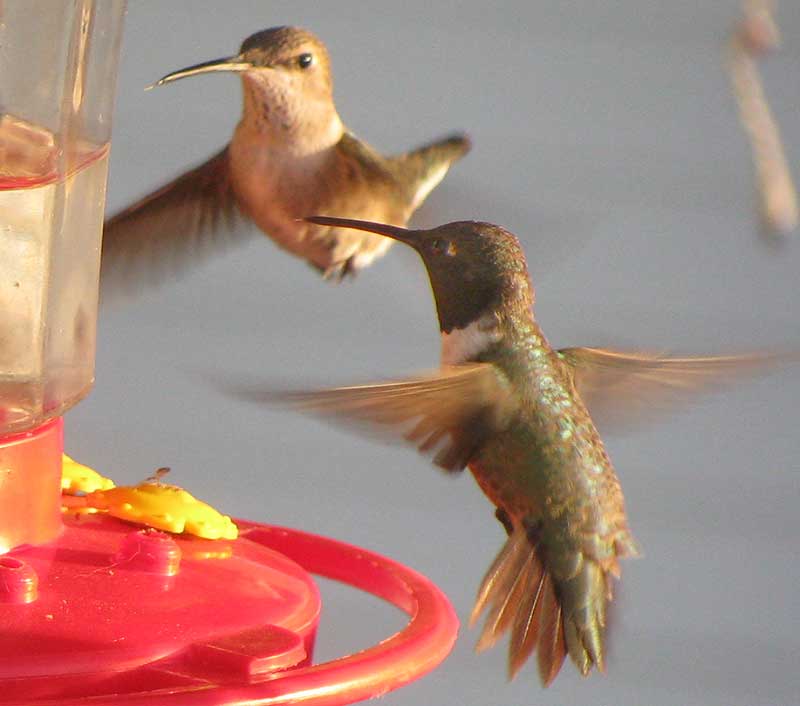Excerpts from Jim Conrad's
Naturalist Newsletter

from the April 28, 2013 Newsletter issued from the Frio Canyon Nature Education Center in northern Uvalde County, southwestern Texas, on the southern border of the Edwards Plateau; elevation ~1750m (~5750 ft); N29.62°, W99.86°; USA
BLACK-CHINNED HUMMINGBIRDS
Michael Overton's "Birds of Uvalde County" checklist lists nine hummingbird species for our County, though eight are regarded as rare, very rare, accidental, or not present during the spring. The single species noted as common in the spring is the Black-chinned Hummingbird, ARCHILOCHUS ALEXANDRI, and that's the species mobbing local feeders nowadays, though sometimes other species do turn up, such as Rufous Hummingbirds. Therefore, when neighbor Fred invited me to visit for a hummingbird photographing session the other day, we both knew that basically I was going over to take snapshots of Black-chins. Above you can see a male and female about to take a side-by-side slurp.
For birders, the big thing about Black-chinned Hummingbirds is that they're the only North American hummer with truly black throats. In certain light conditions other hummers may seem to have black throats, but as they dart around eventually the light catches just right on a feather or two and you see bursts of iridescent color.
In fact, even with such a nice picture as ours showing a female with a male with a seemingly black throat, I needed to study awhile before pronouncing with certainty that we had Black-chinned Hummingbirds and not, say, a Ruby-throated with its ruby throat just seeming black. Happily, I got other pictures more clearly showing some of the Black-chin's field marks, such as the one below:

It happens that just below the Black-chin's truly black throat there's a touch of iridescent violet color, visible on one of the hummers in that picture. That splash of violet really narrows down the possibilities.
Also, behind the nearest hummer's eye notice the conspicuous white spot. Several other hummer species bear such white spots, but those spots generally are smaller. The partial white collar around the nearest bird's throat also is a good field mark visible when the birds are perching.
Black-chinned Hummingbirds are fairly common summer nesters in much of the western US, southern Texas and adjacent northern Mexico. They overwinter mostly along the Mexican Pacific slope and the central Mexican highlands.